|
Site Menu
Home
First Floor
Second Floor
Third Floor
House
Senate
Fourth Floor
Dome
Exterior Views
Postcards
Exterior Statuary
Basement, Etc.
Rumors
Trivia
Construction
Cornerstone
Past Capitols
The Kid Zone
|
|
First
Floor
|
East Ceiling
The
three murals and other paintings below were added to the ceiling of the
east foyer of the Capitol in 1886. This was done to improve the
appearance of the new main entrance to the building when the second floor
stairs were removed and the original basement was converted
to the current first floor. The marble steps were removed in late
1885. The ceiling paintings below, as well as the early murals in
the north and south halls of the first floor were done by unknown artists
of the Phillipson Decorative Company of Chicago in 1886.
|
Center of 1st Floor Rotunda
|
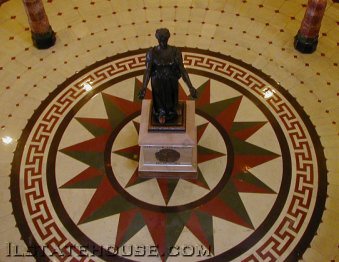
We have been informed by the family of
Mary Lawler, a personal friend of Julia Bracken, that Ms. Lawler may have
been the model. Books by Ms. Bracken do not refer to the model by name,
but seem to indicate that it was someone she and her husband were well
acquainted with. |
This sculpture of a woman with open arms represents "Illinois Welcoming
the World". The plaster statue was first displayed in the
Illinois Building at the 1893 Columbian Exposition. The sculptor,
Julia M. Bracken, was asked to reproduce the statue in bronze for the
Capitol. It was dedicated on May 16, 1895. The star in the
marble tile at the base of the statue has eight points, one for each
letter in the word Illinois.
A 1962 newspaper article states that singer and actress Lillian Russell
was the model for this statue. |
North and South Halls
|
Eight
murals were added to the walls of the north and south corridors of what is
now the first floor of the Capitol around 1885. Unfortunately the
names of the artists who painted the eight original murals are unknown.
In 1989, four new murals were added to these corridors to reflect
historical and social changes in Illinois from the mid 1800s to the 20th
Century. |
|

"Marquette and Joliet at an
Indian Village on the Des Plaines River in 1673"
Location: south hall |

"Transforming the Prairie"
Location: south hall, east
Artist: Ken Holder |

"Fort
Dearborn at the Mouth of the Chicago River"
Location: south hall
|

"Future Governor Edward Coles
Freeing His Slaves While Enroute to Illinois1819"
Location: south hall |

"The Key"
Location: south hall, west
Artist: Billy Morrow Jackson |

" New Salem"
Location: south hall |

"Lincoln At New Salem 1831"
Location: south hall |

"The Rise of Chicago"
Location: south hall, west
Artist: Ellen Lanyon |

"Fort Chartres on the
Mississippi River Near Prairie du Rocher"
Location: north hall |

"U.S. Grant Taking Command at
Cairo in 1861"
Location: north hall |

"Starved Rock on the Illinois
River Near Ottawa"
Location: north hall |

"A Clinic on Constructive
Contribution"
Location: north hall, west
Artist: D.F. Bushman
|
House of
Representatives Committee Room 114
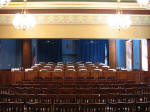

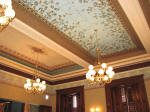
This room was restored in
the winter of 2006. Portraits of five former Speakers of the
House enhance the decor.
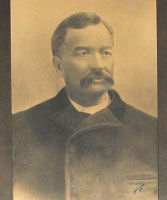 |
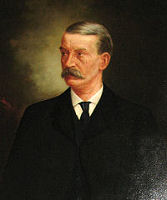 |
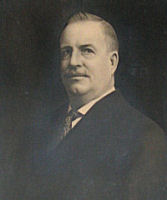 |
|
Asa
G. Matthews
36th General Assembly |
John H. Miller
43rd General Assembly
|
Charles Adkins
47th General Assembly |
|
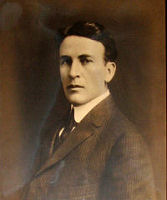 |
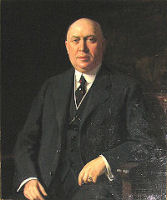 |
William McKinley
48th General Assembly |
David E. Shanahan
49th,50th,51st,53rd,56th,57th G.A. |
Legislative Reference Bureau
Library
|
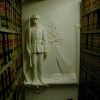
Civil War Soldier |
This
artwork was uncovered during a restoration project in the early 1970s in
what is now the Legislative Reference Bureau, located in the southeast
corner of the building. A mezzanine was constructed in 1971 which
presently permits visitors to view the artwork up close. This area
of the capitol was once the office of the Illinois Adjutant General. |
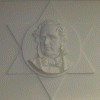
Relief of Col. Edward
Baker, Civil War hero and friend of Abraham Lincoln |
Southwest
Corridor
Room 100
|

